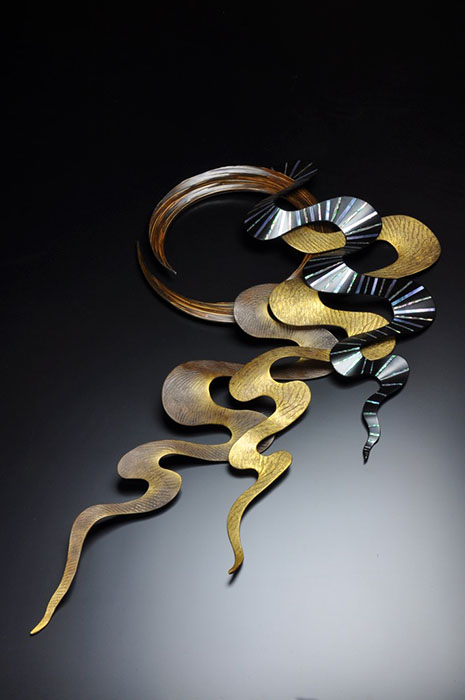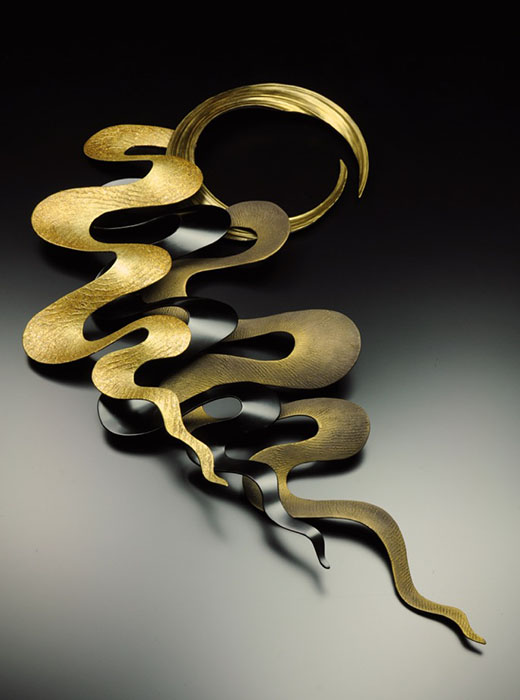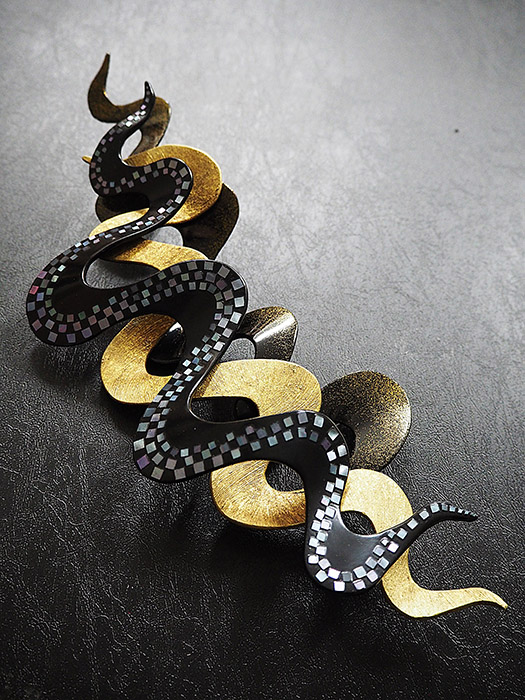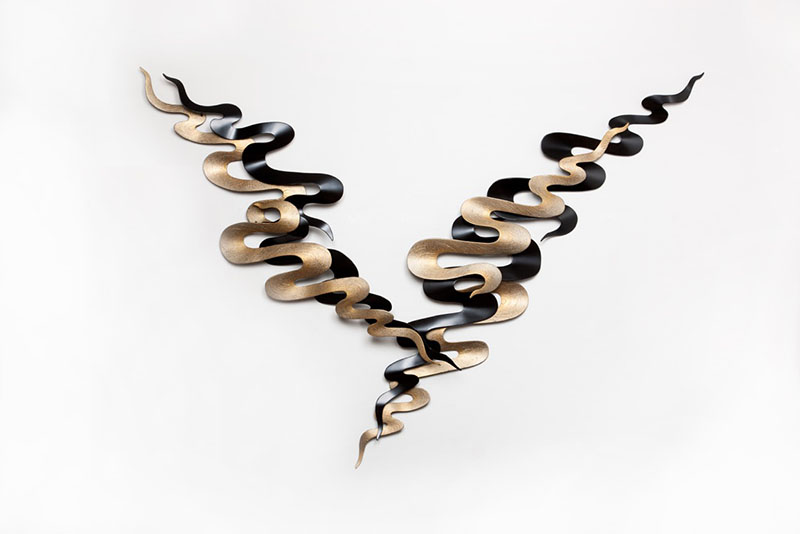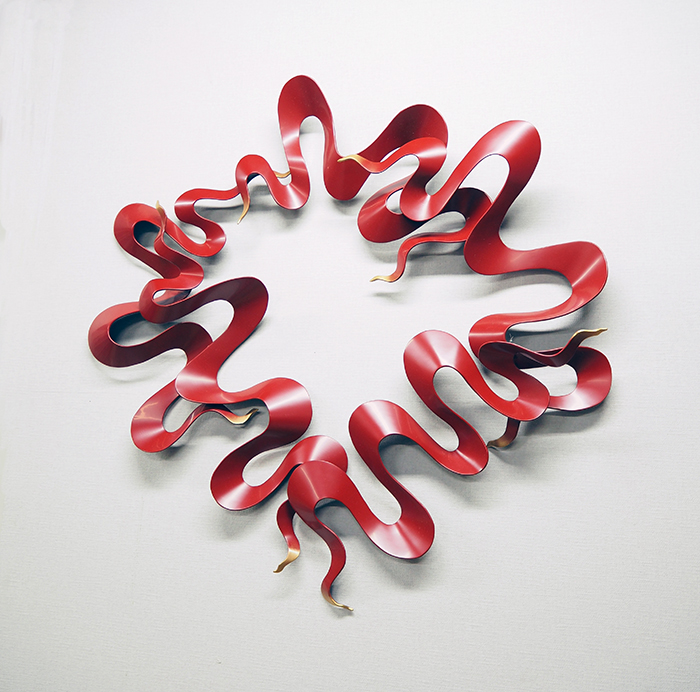The Nature of Urushi
Introduction by Keiko Fukai
Matsuahima Sakurako’s elegantly sculpted wave-like forms decorated with lacquer, mother of pearl and powdered gold reminds us of the Rinpa *style of Japanese art in the 17th century that was characterized by brilliant colored painting and the lavish use of gold leaf, such as in the famous iris screens painted by Ogata Korin.
However Matsushima’s pieces are intended as wearable body art and reflect aspects of avant-garde jewelry.
Her use of lacquer was inspired by her travels deep inside of China and other Asian countries when she was in her twenties, where there are old, established traditions of lacquer. She discovered there were unique tribal traditions of wearable ornaments that were deeply embedded in their cultures.
Not only did this experience give birth to the inspiration for her future work, but it also changed her life. She developed a commitment to people elsewhere in Asia, who are also working with lacquer, with whom she now organizes symposia, exhibitions, workshop and exchange programs. These activities have earned Matsushima a high level of respect and appreciation by many organizations, and she is frequently invited to talk at special events, such as a dinner party at the residence of Prime Minister Abe, when the President of Myanmar visited Japan in 2017.
Matsushima is currently a Professor at Utsunomiya University in Tochigi Prefecture as well as the Director of the Asian Lacquer Craft Exchange Research Project at the University.
Urushi (natural lacquer) is the sap of trees found in East Asia. As Asian cultures developed, the lustrous shining allure of urushi was used to beautify objects and each society developed its own unique assortment of techniques and art forms.
As a young student, I knew nothing about this material or craft. Urushi’s long history of both practical and artistic use in Asia attracted me. I decided to focus on this noble material and to learn how to express myself using it.
I have always been fascinated jewelry and ornamentation. Why we humans adorn our bodies has been an abiding interest. In my research, I have noted the correlation between ornamentation and animism. I believe that adornment and artistic expression is humanity’s link to the mystery of nature.
At university, I began applying urushi materials and techniques to jewelry design. I was especially excited by the possibilities of kanshitsu as a medium as it can be formed into any shape and is very light. When I began designing larger body ornaments, it was with the properties and beauty of urushi in mind.
In my development as an artist, I progressed from body jewelry to three-dimensional objects and then to wall sculptures, exploring the possibilities and use of space. I use traditional techniques to produce all my artwork. Artistic expression using urushi, in particular with kanshitsu, is infinite – objects of any shape and form are possible. In addition to shape, traditional decorative techniques using not only sharp colors or subtle hues but also raden and maki-e — using shell, metal powder and foil — enable a wide range of decorative effects.
Recently, I have mainly chosen to display kanshitsu wall sculptures. It is exciting to discover how urushi objects integrate themselves into living spaces. I am attracted to the barely sensed emotion, dynamism, and passion that exists in nature and deep within each of us. When contemplating a new work. I strive to create something that enables viewers to feel the underlying potency of nature, the silent flow of energy and to grasp the marvel that we are alive.
Please enjoy the unrestrained forms of kanshitsu and the harmony urushi produces.
Sakurako Matsushima attended Tokyo University of the Arts and is a Professor at Utsunomiya University in Tochigi Prefecture, and Director of the Asian Lacquer Craft Exchange Project. She has exhibited her works worldwide since 1989.

